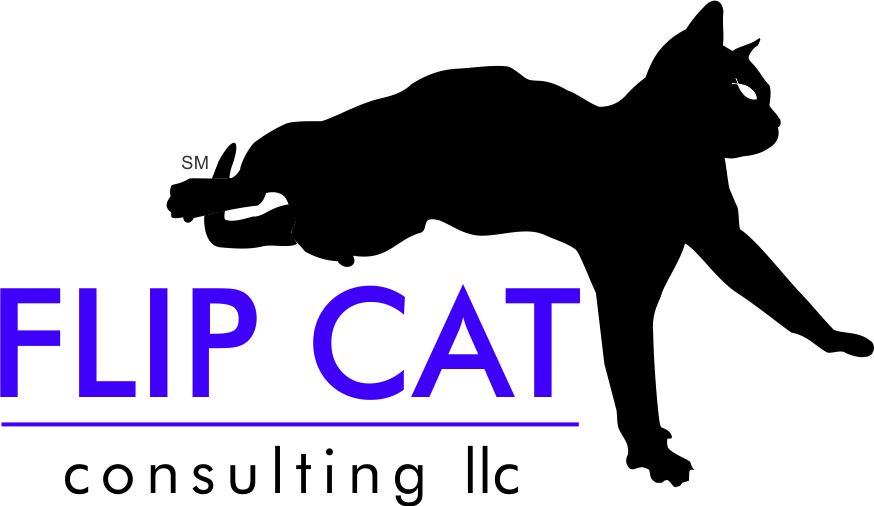It's Not About Marketing The Law Firm Anymore - Pt. 1
/It’s Not About Marketing the Law Firm Anymore
No, I’m not one of those lawyers who abhors the words “sales” and “marketing.” Besides, I don’t practice, I advise on marketing, business development, social and digital. And, I believe the future for law firms centers less on “marketing the firm” and more on
We have long moved past the days of expensive, bland tombstone ads in publications for other lawyers. We have also moved past the isolating silo of traditional marketing alone into an open sea of opportunities to communicate. Today’s consumers, whether individuals or companies, are becoming accustomed to providing feedback and playing a more active role in what is delivered to them. In the past, we used “push” marketing: advertising and similar methods to push a message we crafted (in isolation). Now, we can bring consumers and their wants and needs into the lab where we concoct our messages, and produce tailored communications. The long Battling Ropes the photo above represent the importance of outlining long-term plans and goals, with the flexibility to listen and learn from consumers, competitors, peers, staff – anywhere from which an idea might arise.
Show How You Are Different
The digital age rewards authenticity. Not only is the inauthentic message relatively easy to spot, a client will leave you in search of a more authentic option. Consumers are increasingly more comfortable with performing research and purchasing decisions via digital and social means, and they base decisions upon authenticity, and make decisions more quickly. Think With Google refers to these decisions as “micro-moments.” In a recent webinar, Google explained that consumers' tendencies to act “in the moment” mean they make little time to browse around a website – thus, their expectations for RELEVANCY are higher. Plus, in the heat of decision-making, people are more loyal to their own needs than a specific brand. (I realize that engaging a law firm is a longer decision process, yet initial searches online for information about a firm, its competency, compatible services, recency (e.g. recent news, publications, presentations, etc.) would factor in to the online research and information-gathering phase.)
Culture
A law firm is merely a collection of people, and such a collection will develop its own culture. HootSuite recently leveraged a new social media tool, live streaming via the Periscope app, to demonstrate the culture of multiple offices. The video, Follow The Sun, was shot live and streamed live to Twitter as the work day began in the company’s varied offices around the world. Something similar would be a great way to leverage social media to tell a story about the firm, its employees, culture, approachability, diversity, and outreach. A firm of any size has stories worth an online presence. Think: STORIES ~ STORYTELLING ~ CONTENT ~ CREDIBILITY
People Hire People
The old adage is: People hire people, not firms. I recently flew to California for a legal marketing conference. On the parking lot shuttle to the terminal, I met two gentlemen on their way to watch a PGA Tour event on the east coast, having been invited by their new attorney.
The travelers explained that their former attorney performed work satisfactorily, but that they didn’t feel that he listened to, understood, or cared about their real needs. That changed when they had their initial meeting with the new attorney: “He just listened, and he hadn’t brought with him any pre-conceived notions about what we needed, he asked questions.” The PGA Tour invite wasn’t extended so that he could secure their business, they had already engaged a while back. His invite was more of a thank you. Further, their appreciation of that attorney wasn’t borne by the golf trip, but by his communication skills. The attorney listened, communicated, and the clients believed him as authentic and capable. Digital marketing tools can supplement traditional activities to deliver a similar authentic communication, with the potential to assist a consumer’s decision-making. One way to reach them: blogging.
Blog
Chances are, your firm is blogging already and you don’t even know it. First, though, let’s consider how a firm might approach blogging. I suggest practice-centric blogs, not a “Firm Blog” under which all content is posted. Think about a magazine rack and the variety of specialty publications for every interest and hobby you can imagine. Your firm contacts want the same differentiation, meaning they will prefer to receive only those blogs that pertain to their work, their issues.
Blogging can be as complicated or simple as you have time for. A commentary on a change in legislation or high-court decision will understandably be more involved than a straightforward list or standard guideline (7 things to consider before adopting; 10 ways to prepare your client for mediation). Plus, an editorial calendar will help organize blogs for the year and give comfort to writers regarding deadlines and anticipated topics.
Why do I say you are blogging already? Newsletters. Take the same preparational and organizational steps used for newsletters and apply them to your blog.
Social Credibility
Also known as Social Currency, online credibility helps a decision-maker determine your perceived worth and authenticity. Consumers will ask the same questions online as they would in real life:
- What is your experience?
- What do people think of you?
- What do people say about you?
If your profile cannot be found in the platform where a prospect seeks information (within LinkedIn, for example), they may select an alternative and/or may discount your value. Other ways in which you will be measured online: do you interact with others, do you share, and do you share information of value. Sharing is the backbone of social media, and sharing valuable content – a hallmark of knowledge and credibility. How do you know what is valuable? Well…you have to communicate authentically with your audience, listen, and respond. And, you must engage on a regular basis. (Regular can mean daily, weekly, or monthly – establishing a pattern is essential.)
If social is the way, HOW DO YOU KEEP UP?
First and foremost: you cannot keep up with it all. Explore and discover what tools work best for you currently. (“Currently” because the fluidity of social and analytics and the speed of innovation may present more suitable tools next year, next month, next week.) Perhaps Twitter suits your style of engagement better than Pinterest, or maybe you like the longer options for “micro-blogging” on FaceBook and LinkedIn. Early adopters may forge ahead with new ways to connect with prospects via visual mediums like live-streaming (Periscope and Meerkat) and Instagram.
Within social platforms, you will find thought leaders to follow and from whom you can glean useful tips for your own use or to share with others. This is one of the great benefits of social and online activity – connecting with a peer or someone outside your field from whom you learn and with whom you share information. Leverage those connections and that input to help you stay ahead of information.
Plenty of tools exist to help automate your posts, track your followers, measure your analytics, and send replies. ZenDesk, HootSuite, and TweetDeck are examples that help manage and schedule social activity.
The present world is fluid and fast-moving. Keep up as you can, and seek others’ knowledge to supplement yours (and as a prudent use of your time):
- Posts from members of your online community
- Webinars
- Training seminars
- Educational courses
- Hire staff with subject matter knowledge (analytics, blogging, platform-specific, integrated marketing)
- Hire contractors for training and project-specific work (to fill knowledge gaps and for periodic work)
Part Two of this post will follow later today. To learn more about digital marketing, social media tools, and integrating a digital strategy, please contact us.




